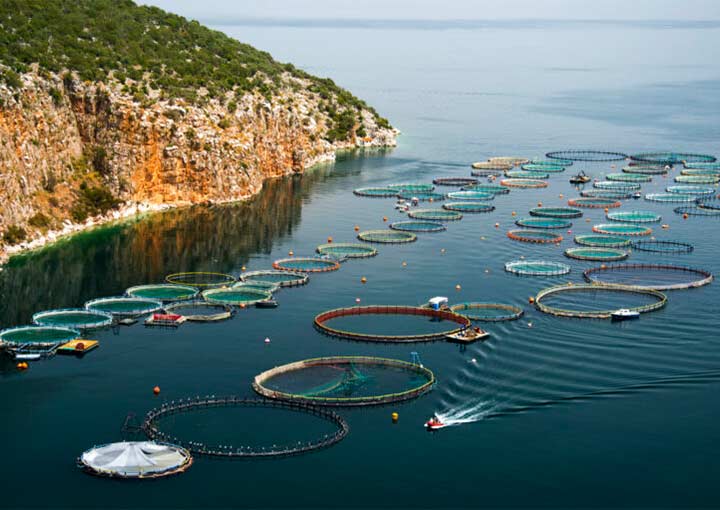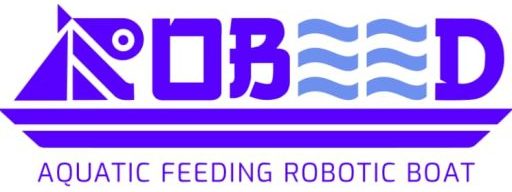
Feeding equipment
Feeding carts
In the case of intensive fish farming, with centralized pond systems connected to suitable roads, feeding carts can be used effectively. They are not automatically operated, but the operator is fully in control of them. the feeding machines can be driven by themselves or tractors. This feeding cart’s basic operation principle is the same: Feed shall be blown into a fish tank via turbo blowers or large capacity ventilators.
A tractor-pulled feeding cart that is operated by an individual gasoline engine and can be controlled from the tractor by an electric remote-control panel. A self-propelled feeding cart where the feed distribution and portioning can be controlled by a mechanical transmission.
Feeding boats
In fish farms having large ponds, feeding boats can be used efficiently. There is a longitudinal slot in the bottom of these boats through which the feed grain is washed out by water current during the movement of the boat. These boats can also be used for fertilization of fish ponds.
They are, however, not suitable for applying pelleted feed because the feed swells up in the bottom of the boat and cannot flow out through the slot.
In order to make these boats suitable for feeding pellet a pellet-distributing adapter can be mounted on top of the conventional boat.
There are feeding boats that are specially designed for fish farms both for pellet and feed grain distribution.
One of these types of feeding boats where the feed is discharged from the containers by screws driven by a paddle wheel that rotates during the movement of the boat.
Fish feeding boats, also known as fish feeders or fish farming vessels, are specialized watercraft designed to aid in the feeding of fish in aquaculture farms. Here are some different types of fish feeding boats:
- Automatic feeders:
These boats are equipped with automatic feeding systems that dispense fish feed at predetermined intervals. The feed is stored in a hopper and released into the water through a pipe or chute.
- Hand-fed boats:
These boats require manual labor for feeding the fish. Workers distribute the feed from the boat by hand, either by scattering it over the water’s surface or using a specialized feeder that propels the feed underwater.
- Remote-controlled feeders:
These boats use remote control technology to operate the feeding system. This allows operators to adjust the amount and frequency of feed delivered to the fish.
- Barge-mounted feeders:
These boats are mounted on barges that can hold large amounts of feed and transport it to multiple feeding locations within a farm. They are often used in larger-scale operations where efficiency and speed are critical.
- Catamaran feeders:
These boats have a twin-hull design that provides greater stability and maneuverability when navigating through crowded fish pens. They can be outfitted with various feeding systems, including automated and remote-controlled options.
Smart boat robot (Robbed)
This smart boat is made in different sizes that can move intelligently in fish breeding ponds. It feeds fishes in certain amounts at specific times. According to the defined program, the electricity is provided through the solar panel. Movement of this boat is with the help of an intelligent system. also, the feeding system of this boat works by adjusting the engine speed and rotating sparing blades.
With the help of the control system and programmed board for 12-volt power consumption and boat control system 3-designing a special body for placing equipment with the same balance on the water.
The innovative part
1- Intelligent and adjustable blade system with a special angle for food distribution
2- Control system and programmed board for 12-Volt power consumption and boat control system 3-designing a special body for placing equipment with the same balance on the water.

